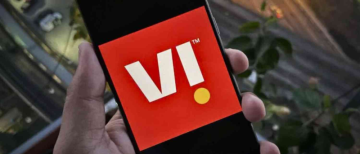Wanna transfer money?
Traditional remittance services like MoneyGram are no longer the only or even the most efficient options for international money transfers. Consumers and businesses alike now seek faster, more cost-effective, and digitally savvy solutions to send and receive money across borders. Whether it’s for personal use, supporting family, paying freelancers, or handling cross-border business transactions, the market has expanded with a range of powerful alternatives to MoneyGram. - Yup, we are talking about a moneygram alternative.
In 2025, sending money across borders shouldn’t feel like wiring cash through a fax machine. But for many users, that’s exactly what platforms like MoneyGram still feel like — clunky, expensive, and slow. Once considered a staple for international remittances, MoneyGram has rapidly lost relevance to sleeker, app-first platforms that offer transparency, better exchange rates, and blazing-fast transfers.
The Friction With MoneyGram (And Why It Matters Now)
MoneyGram still operates in 200+ countries and territories, but user behavior is changing. According to the World Bank, the global average remittance fee is around 6.18%, and MoneyGram’s fee structure often exceeds that depending on destination and delivery method. In contrast, fintech disruptors are offering fees as low as 0.5% to 2% — a huge difference when you're sending money home monthly.
More importantly, 60% of remittances in 2024 were initiated via mobile devices, up from 42% in 2021 (Statista). That means if a platform isn’t optimized for mobile-first use, it's losing out.
Why Look Beyond MoneyGram?
MoneyGram has long been a household name in money transfers, operating in over 200 countries. Yet, it comes with several drawbacks in today’s context:
-
High Fees: Often charge higher transfer fees than fintech platforms.
-
Exchange Rate Margins: Hidden costs in poor exchange rates.
-
Speed: Some transfers take several days depending on method and region.
-
Accessibility: Many services still require in-person visits or cash pickups.
As a result, digital-native platforms are eating into MoneyGram’s market share by offering mobile-first services, real-time transfers, and competitive rates.
Top Alternatives to MoneyGram
1. Wise (formerly TransferWise)

Best for: Bank-to-bank international transfers with near-zero hidden fees
Wise leads the transparency game. Unlike MoneyGram, which often tucks its earnings into less favorable exchange rates, Wise shows users the real-time mid-market rate, with total fees often under 1%.
Data Point:
-
In Wise’s own Q3 2024 financials, the company moved £38 billion globally in just 3 months — a 22% YoY growth.
-
Average cost of a $1,000 USD transfer to India: $7.31 via Wise vs. $18.50 via MoneyGram
Why users love it:
-
Transparent fees
-
Localized banking networks
-
Multi-currency wallet
-
Instant business invoices
Limitations: No cash pickups, which makes it less ideal for underbanked regions.
2. Revolut
Best for: Modern users juggling travel, remittances, and investments
Revolut isn’t just a money transfer app — it’s an entire financial lifestyle platform. From currency exchange and travel insurance to crypto and stock trading, it’s built for a global user base that expects their bank to live inside their phone.
Data Point:
-
Over 40 million global users as of March 2025
-
Over 30 fiat currencies supported for instant exchange
-
Free transfers between Revolut users in seconds
Why users are switching:
-
No-fee currency conversions (within monthly limits)
-
Virtual debit cards and personal IBANs
-
Free ATM withdrawals across borders
The catch? Not available in all countries and requires smartphone fluency. Also, Revolut charges monthly fees for Premium and Metal plans.

3. Remitly
Best for: Migrant workers and families needing speed + flexibility
Remitly understands the emotional weight behind remittances. Most users are sending money home — often to rural or semi-urban areas — and need speed, affordability, and local cash pickup options.
Data Point:
-
Over $35 billion in remittance volume processed in 2024
-
Available in 170+ countries, including Nigeria, Philippines, and Pakistan
-
Offers Express transfers that arrive in minutes
Why users choose Remitly:
-
Choice between low-cost Economy and instant Express
-
Competitive rates in USD to INR, PHP, NGN corridors
-
Cash pickup, bank deposit, and mobile wallet options
Downsides: Slightly higher exchange markups on Express transfers.
4. WorldRemit
Best for: Mobile-first, cash-focused corridors (Africa, Latin America)
WorldRemit shines in regions where smartphone adoption has leapfrogged traditional banking. It was an early player in linking international transfers with mobile wallets like M-Pesa in Kenya.
Data Point:
-
95% of WorldRemit’s transactions are completed within 10 minutes
-
Supports transfers to 130 countries
-
Low-cost transfers to over 70 mobile money services
Why it’s killing it in emerging markets:
-
Supports airtime top-ups
-
Low minimum transfer limits
-
Seamless mobile wallet deposits
Limitation: Exchange rates can fluctuate more than competitors.
5. Western Union Digital
Best for: Users needing trusted cash pickup across borders
While WU and MoneyGram are often seen as legacy competitors, Western Union has embraced the digital shift far more aggressively. Its mobile app now supports direct-to-bank, wallet, and in-person pickup with tracking.
Data Point:
-
34% of Western Union's revenue in 2024 came from digital transfers (up from 16% in 2020)
-
Available in 200 countries — unmatched physical footprint
-
Transfers under 5 minutes for in-network agents
Why it stays relevant:
-
Trusted in rural communities
-
Huge agent network for recipients without smartphones
-
Loyalty rewards for regular users
Caveat: Still expensive — average cost of a $500 transfer to Africa: $29, almost 6% in fees.
6. Xoom (from PayPal)
Best for: Existing PayPal users needing speed and brand trust
If you're already in the PayPal ecosystem, Xoom is a frictionless way to send funds abroad. It connects with your PayPal wallet and supports bank, mobile wallet, and cash pickup transfers.
Data Point:
-
Services in 160+ countries
-
Sends up to $10,000 per transaction, higher than many apps
-
Instant cash pickup in many regions like Latin America and South Asia
Why people stick with it:
-
Trust in PayPal brand
-
High transaction limits
-
Tracking and refund protections
What’s lacking: Higher than average exchange rate markups and debit/credit card fees.
_1749959799.jpg)
7. Crypto Remittances (via Binance Pay, Strike, or USDT)
Best for: Speed + low fees for tech-savvy users
In countries with volatile currencies or limited banking access, crypto is becoming a serious alternative. Platforms like Binance Pay or Strike let you send stablecoins (e.g., USDT) that convert into local currency at the other end.
Data Point:
-
$46 billion in cross-border stablecoin transactions in 2024 (Chainalysis)
-
Transfer costs: often less than 1%
-
Transaction time: under 1 minute
Real-world use: In Argentina and Nigeria, crypto remittances now account for over 10% of incoming transfers in 2025, bypassing banks entirely.
Drawbacks: Volatility (unless using stablecoins), regulatory barriers, and tech knowledge required.
Future of Money Transfers in 2025
If you’re in a remote town with no digital wallet access and need cash urgently, MoneyGram still has value. But for everyone else — especially smartphone users — there are far better, cheaper, and faster options available now.
In fact, in a survey by Deloitte in 2024, 72% of millennials and Gen Z users said they preferred using fintech apps for remittances over traditional services like MoneyGram or Western Union.
With fintech innovations booming, expect the following trends to dominate remittances:
-
Increased Use of AI for Fraud Detection & Smart Routing
-
More Crypto-to-Fiat Conversions in Real Time
-
Embedded Finance via Messaging Apps (WhatsApp Pay, WeChat, etc.)
-
Greater Government Regulation on Money Laundering
-
Increased Integration of KYC & Biometric Verifications
Platforms that can maintain compliance while offering seamless cross-border UX will dominate the market. MoneyGram is evolving too, but newer players are reshaping expectations in pricing and speed.
While MoneyGram still serves millions, today's consumers have a wide range of robust alternatives to choose from—many of which offer lower fees, better speed, and greater convenience. Whether you’re a digital nomad, a small business owner, or simply sending money back home, there’s a smarter solution out there for you. From fintech giants like Wise and Revolut to newer innovations like crypto wallets, the remittance space is now open, competitive, and built around user experience.
Choosing the right platform depends on your needs: how much you're sending, how quickly it needs to get there, and how your recipient prefers to receive it. By comparing your options and leveraging tech-forward solutions, you can save money, time, and stress.
With inputs from agencies
Image Source: Multiple agencies
© Copyright 2025. All Rights Reserved Powered by Vygr Media.


























